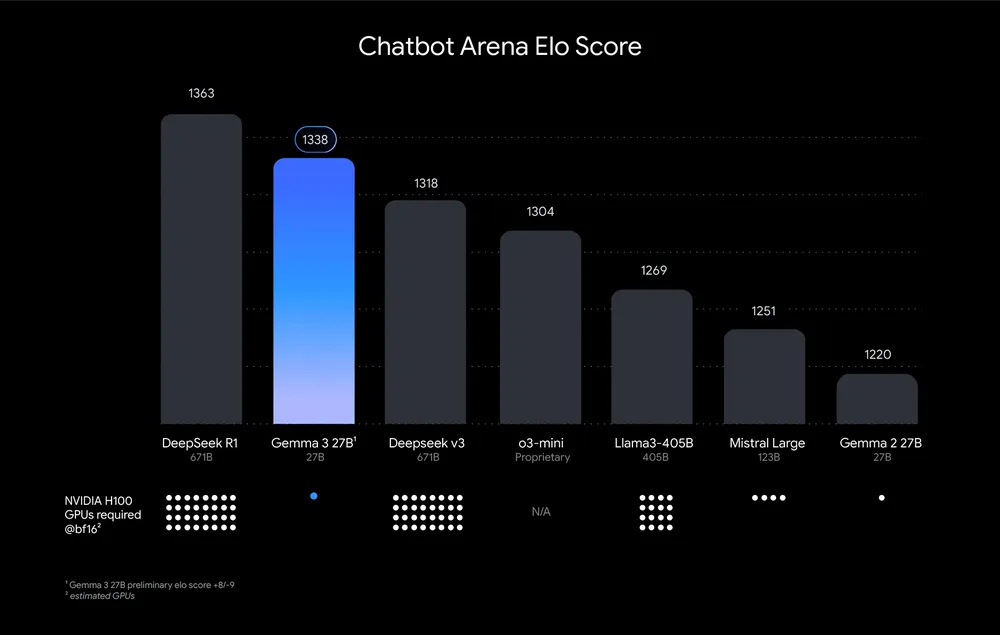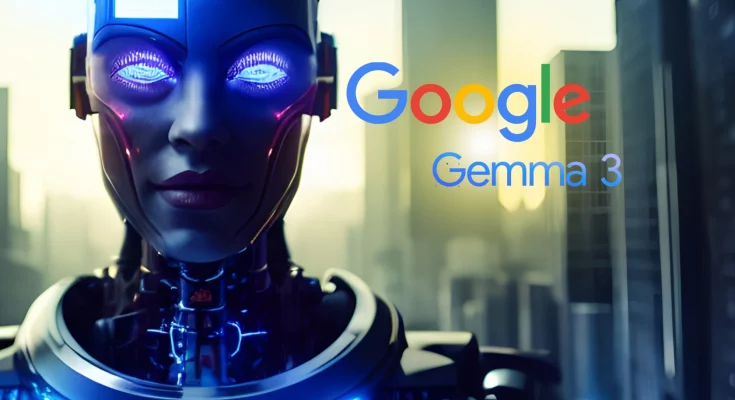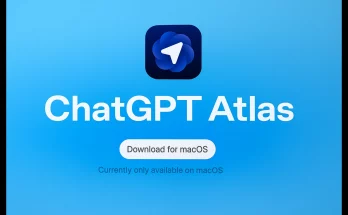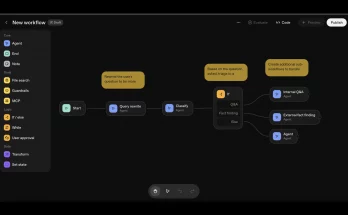With the rapid advancements in artificial intelligence, it’s crucial to have the right tools at your disposal. Google’s latest release Gemma 3, is designed to enhance productivity for developers, enabling them to create advanced AI applications right on their devices. In this article, we will explore the key features and capabilities of Google Gemma 3, compare it to other models, and discuss its impact on the AI landscape.
What is Gemma 3?
Gemma 3 is a collection of lightweight, state-of-the-art open models built on the sophisticated technology that powers Google’s Gemini 2.0 models. This new release aims to make AI solutions accessible for developers needing efficient performance without compromising on quality. The model is designed to run efficiently on devices ranging from phones to powerful workstations.
Key Features of Gemma 3
- Unmatched Performance: Gemma 3 outperforms competitors in its class, providing developers with the world’s best single-accelerator model for applications that require robust processing power.
- Multilingual Capabilities: The model supports over 140 languages, making it easier for developers to build applications that cater to a global audience.
- Advanced Reasoning: Gemma 3 includes advanced text and visual reasoning capabilities, enabling applications to analyze and understand complex data like text, images, and videos.
- Large Context Window: With a 128k-token context window, Gemma 3 can process large amounts of information, critical for developing comprehensive AI-driven applications.
- Function Calling: This newly integrated feature supports function calling for automating tasks and developing agentic experiences, providing flexibility in application creation.
- Faster Performance: Gemma 3 comes with quantized versions to optimize performance and reduce computational requirements, ensuring it remains accessible for various devices.
Why Gemma 3 Stands Out

Source: Google
One of the significant advantages of Gemma 3 is its ability to run on a single GPU or TPU host without sacrificing performance quality. In preliminary evaluations, it ranked highly against other competitive models, such as Llama3-405B and DeepSeek-V3, solidifying its position as a top choice for application development.
Safety and Responsible Development
Gemma 3 has been developed with a strong focus on safety protocols. Google prioritizes responsible AI, balancing innovation with rigorous testing and evaluation. The development process included:
- Extensive Data Governance: Ensuring that the training data used is appropriate and diverse.
- Alignment with Safety Policies: Fine-tuning the model to adhere to strict safety standards.
- Benchmark Evaluations: Conducting thorough tests to evaluate the potential misuse risk and maintain low-risk levels in sensitive applications.
Introducing ShieldGemma 2
Alongside Gemma 3, Google has launched ShieldGemma 2, a dedicated image safety checker model. This solution aims to provide robust safety measures for image-related applications by categorizing content based on three criteria:
- Dangerous content
- Sexually explicit content
- Violent content
With customization options available, developers can tailor ShieldGemma 2 to meet the specific safety requirements of their projects.
Integration and Deployment Flexibility
Gemma 3 is designed for seamless integration with popular development tools, allowing developers to work with their preferred frameworks. Some notable integrations include:
- Support for frameworks such as Hugging Face Transformers, JAX, and PyTorch.
- Instant access through Google AI Studio for immediate experimentation and development.
- Multiple deployment options including Vertex AI and Cloud Run.
The Gemmaverse: A Community of Innovation
Gemma 3 is part of a larger ecosystem named the Gemmaverse, which is comprised of community-developed models and tools. This collaborative environment encourages innovation while providing developers access to a wealth of resources. Notable projects within the Gemmaverse include:
- AI Singapore’s SEA-LION v3 – Enhancing communication across Southeast Asia.
- INSAIT’s BgGPT – A pioneering model focused on Bulgarian language processing.
- Nexa AI’s OmniAudio – Enabling advanced audio processing on devices.
Supporting Academic Research
To foster academic breakthroughs, Google is also launching the Gemma 3 Academic Program, offering $10,000 in Google Cloud credits to selected researchers. This initiative aims to promote innovative research using Gemma 3’s capabilities.
Conclusion
Gemma 3 represents a significant step forward in making advanced AI tools accessible and easy to use for developers around the world. Its combination of performance, safety, and community support creates an ideal environment for building innovative applications. Whether you’re developing for a small device or deploying across multiple platforms, Gemma 3 offers the flexibility and power you need to succeed.



